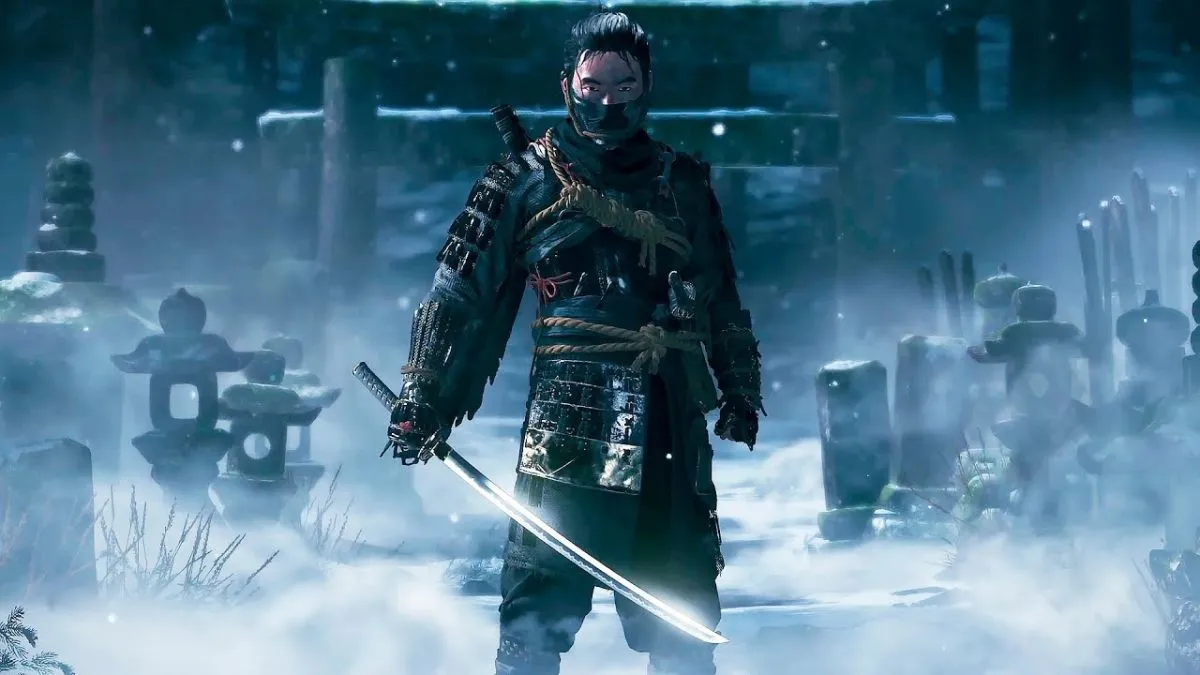A Bit of Historical Context

Before diving right into Ghost of Tsushima, it’s worth having a bit of historical background regarding when it’s set, the samurai themselves, and the Mongol invasion itself.
Ghost of Tsushima takes place during the first of two Mongol invasions of Japan, though neither were successful. This also marked the first time that Japan had faced a foreign power in battle.
This is important because of the way that Samurai typically fought. Even in an outright war, Samurai would call out by name someone from the enemy ranks, and then attack in 1v1 combat. Even when using a bow and arrow, the Samurai abided by this respectful, 1v1 combat.
In contrast, the Mongols were far more ruthless in combat. They took no notice of the Samurai’s combat customs and rushed forward en masse, grappling with individuals they could catch and killing them. The Mongols also introduced the method of firing multiple arrows at once into Japan at the time, which again was at odds with the way Samurai fought.
While no love was lost between the two sides — it is a war, after all — the Samurai massively disapproved of the way the Mongols took to combat.
Combat Is Less Souls, More Arcadey Sekiro

There was one big ol’ assumption from the gameplay shown prior to players getting their hands on it that Ghost of Tsushima‘s combat was very Souls-like.
You know the deal, dance around your enemy, reading their attack patterns and then countering at the precise moment. The deadly dance of Dark Souls!
This isn’t actually the case at all. Each fight feels less like a deadly puzzle you need to solve, and more about perfecting your blocking and parrying skills, akin to Sekiro. It’s more arcadey in feel, though, with more of a hack-and-slash feel to things when you really get to grips with the combat and unlock new abilities and tools.
Get Some Quests Done Right Away

We’re actually big advocates of venturing off the beaten path in video games and forgetting about the main quests in favor of seeing other more interesting things first. This largely stands true in Ghost of Tsushima, too. We’d recommend you go and explore and hunt down some forts to conquer, Shinto Shrines to get new charms, and Hidden Shrines to unlock more slots for the aforementioned charms.
There’s a whole host of things to see on the isle of Tsushima, but before you go nuts exploring every nook and cranny, we’d advise cracking on with a few of the main quest and a couple Tales of Tsushima (side quests) right away.
That’s because some of Jin’s core abilities and tools are only unlocked after completing these first few missions. While it is possible to go ahead and clear out forts and complete other content without these tools, they simply broaden your horizons when it comes to your method of taking down Mongols.
It’s Open World Gameplay, Without the Intrusive HUD

One of the real key highlights in Ghost of Tsushima for us was the fact that while the game does opt for some standard open world gameplay tropes, its minimalistic HUD and design breathes some fresh air into what would otherwise be stagnant gameplay tropes.
For example, rather than simply looking for a Hidden Shrine marker on your map — something that unlocks additional charm slots for Jin — you’ll instead need to keep an eye out for foxes. Follow a fox and it’ll lead you to its den, which in turn will take you to a nearby Hidden Shrine.
You can also pet the fox. 5/5 – would buy 10 times.
Jokes aside, even Ghost of Tsushima’s waypoint system has a minimalistic feel to it, allowing players to really soak up all that stunningly cinematic gameplay. Rather than having a glaring colored marker or arrow guiding you to your destination, players will instead have Guiding Wind, acting like a natural GPS.
If open world games have got you fatigued, Ghost of Tsushima might be worth picking up anyway. These fresh and novel approaches to stale mechanics helps them to feel less like a chore and more like an exciting surprise each time you spontaneously stumble upon one.
There’s No RPG Level Grind

Similar to the Dark Souls combat assumption, players also seemed to think that Ghost of Tsushima would have some leveling system whereby players could improve Jin’s stats or level him up to deal more damage in combat.
While there are very lite RPG mechanics at play, there’s no leveling system in Ghost of Tsushima. As a result, you won’t be level gated at any point in the game, and you won’t have a max level cap to try and reach on your adventure.
You do have your ‘Legend’ which you can build up over time. This increases the amount of ‘Resolve’ that Jin has, which is used to heal and also perform special attacks.
You’re Looking at 30 Hours to Beat It, Longer to Platinum

During our playthrough, where we finished the entire main story questline, dabbled in side quests, and did a good amount of exploring Ghost of Tsushima’s map, we clocked in at just over 30 hours to beat the game.
If you’re looking to do everything in the game, find all the collectibles, and 100% the game, you’ll be looking at closer to 50 hours. Though, unless you’re desperate for that Platinum trophy, it may not be worth your time. There’s no special in-game reward for doing every last thing, so it entirely comes down to how badly you want those trophies.
Your Armor Design Changes, But You Can Change It Back

Over the course of Jin’s adventure to stop the Mongol invasion, he’ll find a ton of different types of armor, and materials such as Supplies and Linen that can be used to upgrade it. As you upgrade your armor, its design will change alongside its stats.
While each armor set tends to look more and more badass the more you upgrade it, some players may prefer the original look. The good news is you can revert back to its original look by pressing Triangle on it on the ‘Gear’ screen, while retaining all of those upgraded stats.
Head over to our Ghost of Tsushima wiki for more helpful guides.













Updated: Jul 16, 2020 09:21 am